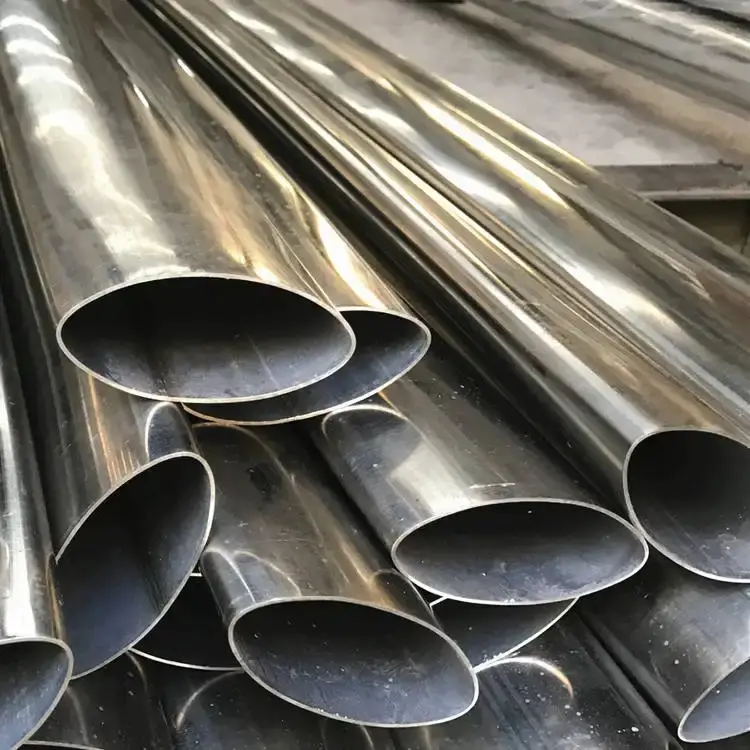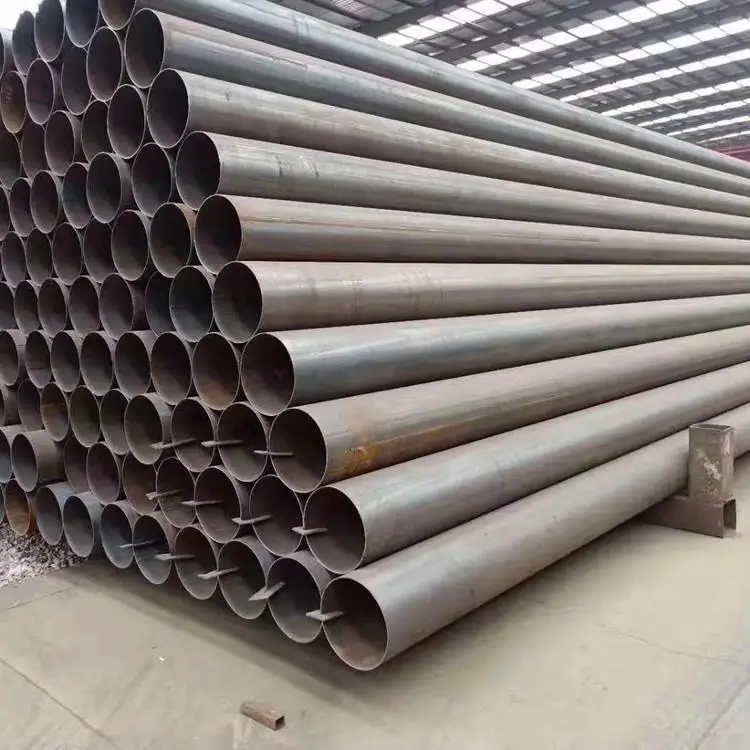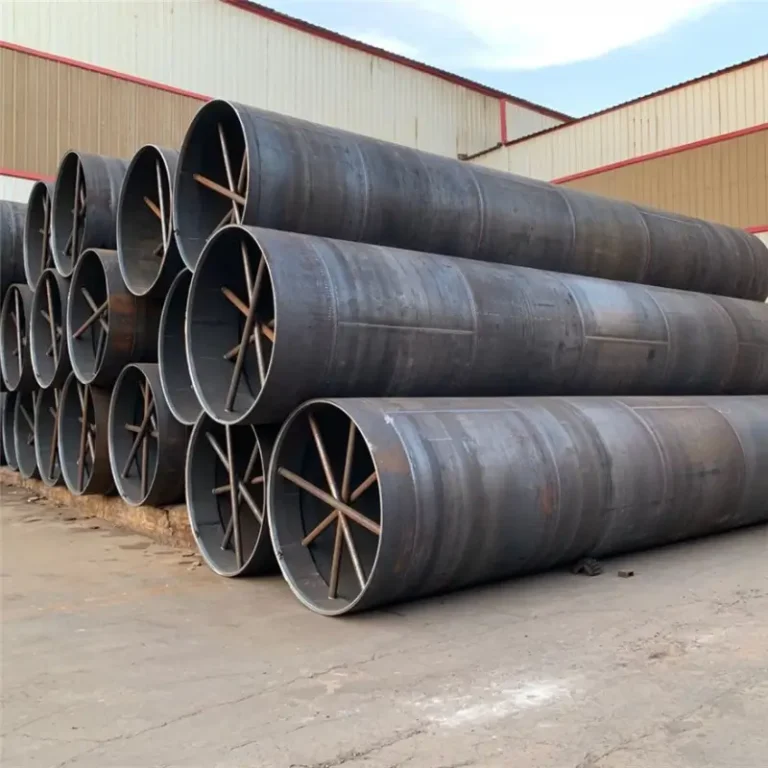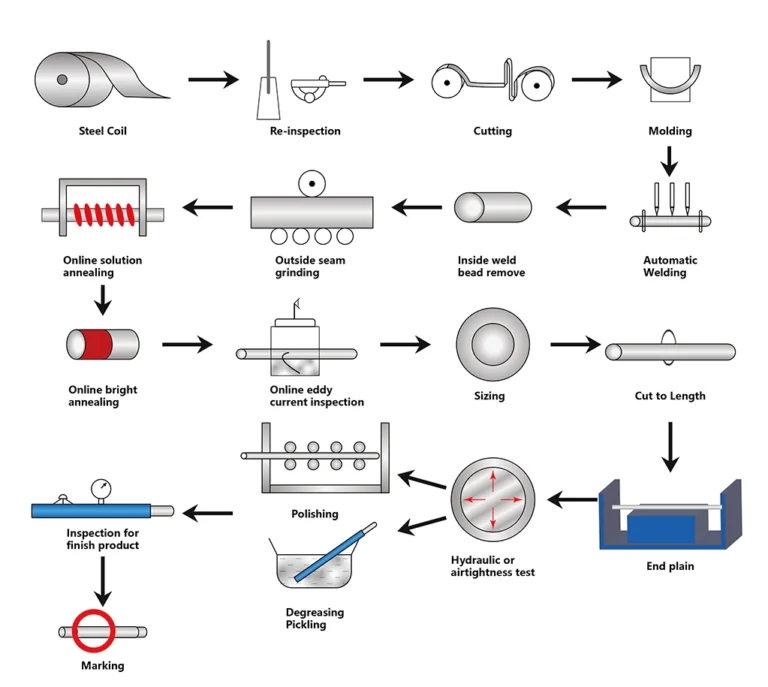Welded Stainless Steel Pipes and Tubes, refer to the steel pipe used steel or steel strip through the unit and mould crimping forming after welding. Welded steel pipe with a simple production process, high production efficiency,variety of specifications, is more cost-effective than seamless options.
Material:
304/304L;
316/316L;
etc
Welded stainless steel pipes and tubes are formed by rolling stainless coil or strip into a cylinder, rolling and forming, and fusion‑welding the longitudinal seam,also referred to as welded pipe. The production process is simple and efficient, but the strength is usually lower than seamless steel pipe,the working pressure is low 20%.
Welded Stainless Steel Pipes with simple production process, high production efficiency, varieties of specifications, and more cost-effective than seamless options, are gradually replacing seamless pipes in many fields due to low cost, flexible specifications and strong corrosion resistance, are widely used in construction, chemical industry, food processing and other fields,but the general strength is lower than seamless steel pipe.
As a leading welded pipe supplier, we offer products in the following grades of materials and standards:
Grade: 304/304L, 316/316L, Duplex 2205, Super‑duplex 2507,309S, 310S, 317, 430, 904L, etc
Standard: ASTM A312;ASTM A269; JIS G3459; ASTM A789(duplex steel);DIN;EN;ISO;GB,etc
Sizes: 1/2”-48” (DN 15 – DN 1200)
Wall Thickness: Sch5S – Sch160; PN 10 – PN 100
Surface: Polishing, annealing, pickling, bright
Custom End‑Preps: Beveled, socket‑weld, threaded ends prepped per ASME B16.25/16.11
Seam Types:
Generally, welded steel pipe has high precision, uniform wall thickness, and high interior brightness of the pipe (the surface brightness of the pipe is determined by the surface grade of the steel plate), and can be cut to size as required.



Cost-Effectiveness: Compared with seamless tubes, welded tubes offer superior performance while remaining competitively priced. The welded process also reduces material waste and cost while enabling large diameters.
High Corrosion Resistance: Stainless steel is resistant to acids and alkalis and maintains stable performance in harsh environments. Grades 316 and duplex resist chlorides & acids better than 304.
Dimensional Precision: Automated forming & cutting ensure OD/tolerance within ±1%.
Flexible Customization: Available in a wide range of sizes, shapes, and thicknesses. Dimensions, materials and surface treatments are customized according to your specific needs.
Strength and Durability: Welded joints are strong and can withstand high pressure (e.g. oil pipelines) and high temperature.
1. Construction & Infrastructure:
Water supply systems, structural support (as bridges), underground piping (durable and resistant to high pressure).
2. Oil & Gas:
Transportation of crude oil, and natural gas (spiral welded pipes for long-distance high-pressure pipelines).
3. Food & Chemical:
fluid/chemical transportation piping (relies on corrosion resistance).
4. Mechanical and automotive:
heat exchangers, boiler components, automotive exhaust systems.
5. Energy & Industry:
power plant piping, heat exchange equipment (gradually replacing seamless steel pipes)
1. Cleaning: before welding stainless steel pipe, the surface of the pipe needs to be cleaned and treated to remove dust and dirt, to avoid affecting the welding effect.
2. Cutting: according to the requirements and use of different scenarios, the stainless steel pipe needs to be cut to form the required length.
3. Chamfering: for the stainless steel pipe to be welded, chamfering treatment is required to ensure that the pipe mouth is clear, and reduce the misalignment and annealing phenomenon.
4. Welding: select the appropriate welding method for welding, such as manual arc welding, argon arc welding, plasma welding, etc., to ensure a flat end of welded parts, with no pores and cracks.
5. Grinding: grinding the welded parts to remove burrs and sharp edges, making the appearance more beautiful.

1.Weld Seams
To ensure weld quality in stainless steel pipe welding, it is important to follow proper preparation steps, select the appropriate welding method and filler material, correctly adjust weld parameters, address common challenges, and perform thorough post-weld inspections and finishes.
We strictly control heat‑input and shielding gas to produce uniform, defect‑free seams with minimal HAZ.
2. Controlling Welding Electricity and Speed
For different materials and pipe sizes, different welding electric currents need to be controlled to ensure the quality and formability of the welded part.
Fast welding speed will result in a weak weld, while too slow will distort the welded part, it needs to be controlled according to the actual situation.
3. ComprehensiveQuality Inspection
Every pipe undergoes inline and post‑weld inspections:
– Eddy‑current for surface and subsurface defects
– Hydrostatic pressure test for weld integrity
– PMI to verify alloy composition at the seam
– 100% dimensional test(OD, WT, etc)
4. Raw Material Integrity
We source prime stainless coils from known steel mills such as TISCO and Baosteel—each batch certified for exact chemistry and microstructure. This eliminates base-metal variability that can compromise weld performance.
Complete control over products allows us to ensure our customers receive the best quality prices and service. Contact us for a free quote,JBLSTEEL will provide the right solution for your project.

Nous vous invitons chaleureusement à visiter notre entreprise à tout moment. Je suis convaincu que la qualité de nos produits, notre service professionnel et nos prix compétitifs vous satisferont. Nous nous réjouissons de coopérer avec vous.
Politique de confidentialité@ JBLSTAINLESS. Tous droits réservés par Henan Jinbailai Industrial Co, Ltd.